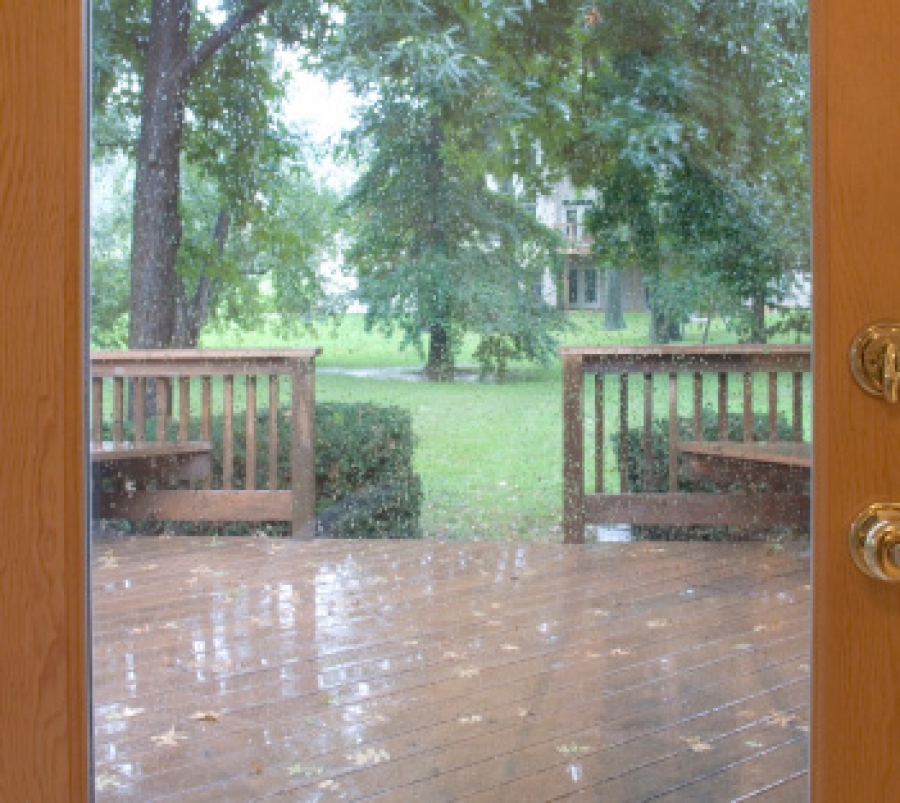Weather Barriers
Weather barriers keep outside weather out and conditioned interior air in. A weather barrier is part of the wall assembly; it prevents the passage of moisture, rain and wind through critical areas of the walls and roof, and protects vulnerable building components from deterioration.

Topic Summary
Weather barriers are becoming increasingly important in the building and construction industry. With recent concerns over controlling the growth of mold within building walls, weather barriers have begun to perform an important preventive role. In 2001, the state of Massachusetts was first to require the use of weather barriers in new construction.
Water and air are driven through leakage points by wind, gravity and capillary forces. When moisture infiltrates the building envelope, wood begins to rot, mold begins to grow, steel corrodes, and insulating R-values decline. Additionally, air migration through wall assemblies decreases the energy efficiency of the building.
Wall Assemblies are Made up of 4 Distinct Functions or Layers
- Rain control layer
- Air control layer
- Vapor control layer
- Thermal control layer
Black tar paper, also known as felt paper, was the first material used as a weather barrier. It was usually stapled to the sheathing behind stucco and other cladding materials. To overcome the issue of felt paper being easily torn, the next generation of building wraps that were introduced were made from very fine fibers of high-density polyethylene. Becoming more prevalent in the construction industry today are liquid applied air and weather barriers. Liquid applied barriers are designed to be either rolled or sprayed onto the sheathing, providing a sealed monolithic envelope.
Air Barriers vs. Vapor Barriers
Air barriers and vapor barriers are not necessarily the same. Vapor barriers -- or, more accurately, vapor diffusion retarders -- are used to reduce the rate at which water vapor can move through building materials. The rate at which water vapor transfers through, or permeates, a material is known as the permeability rating and is described in perms (1.0 US perm = 1.0 grain of water vapor/square-foot/hour/inch of mercury). Typically, anything listed as less than 1 perm is considered impermeable. The placement of vapor barriers depends on the climate. In most climates where there are more heating days, vapor barriers are installed on the interior side of the wall. In climates where high humidity and high temperatures are more common, vapor barrier are installed on the exterior of the wall. Under no circumstances should a vapor barrier be installed on both sides of a wall assembly. This will trap unwanted moisture within the wall assembly.
The Air Barrier Association of America (ABAA) defines an air barrier as a system of building components within the building enclosure system (BES) designed and installed in such a manner as to stop the flow of air into and out of buildings. BES includes the area below the slab, foundation walls, and sidewalls, including all penetrations created by windows, doors, mechanical components, and the roof. For air barriers to perform successfully they need to be continuous over the entire building envelope. The air barrier becomes the border between the interior environment (conditioned space) and the exterior environment (unconditioned space). Common building sheathing materials such as plywood and gypsum are effective air barriers. However, the joints between sheathing materials are the weak link where infiltration can often occur.
Air barriers can be located on the interior or exterior side of a wall assembly. In climates where heating occurs more often, the air barrier should be placed on the interior side of the wall. This will prevent moisture created from heating and other normal activities from penetrating into the wall assembly. Likewise, in climates where cooling occurs more often, the air barrier should be placed on the exterior side of the wall.
Air Barrier Design Considerations
- Code requirements
- Type of structure
- How the building will be used
- Budget, climate and location
- Constructability
- Compatibility with adjacent materials
- Tested performance of the material
After the appropriate weather barrier has been selected, its successful performance requires particular attention to the installation details. In a typical commercial application, eight or more sub-contractors and installers may have a direct impact on the final effectiveness of the barrier. The sequencing of these various trades becomes critical because of their impact on the system. The best way to ensure the quality of a weather barrier installation is to have a qualified independent, third-party inspection done.
Test Methods
- E 2178 – Standard Test Method for Air Permeance of Building Materials.
- ASTM E2357-05 – Standard Test Method for Determining Air Leakage of Air Barrier Assemblies.

Buildipedia Staff
The Buildipedia research and writing staff consists of dozens of experienced professionals from many sectors of the industry, including architects, designers, contractors, and engineers.
Website: buildipedia.com/


